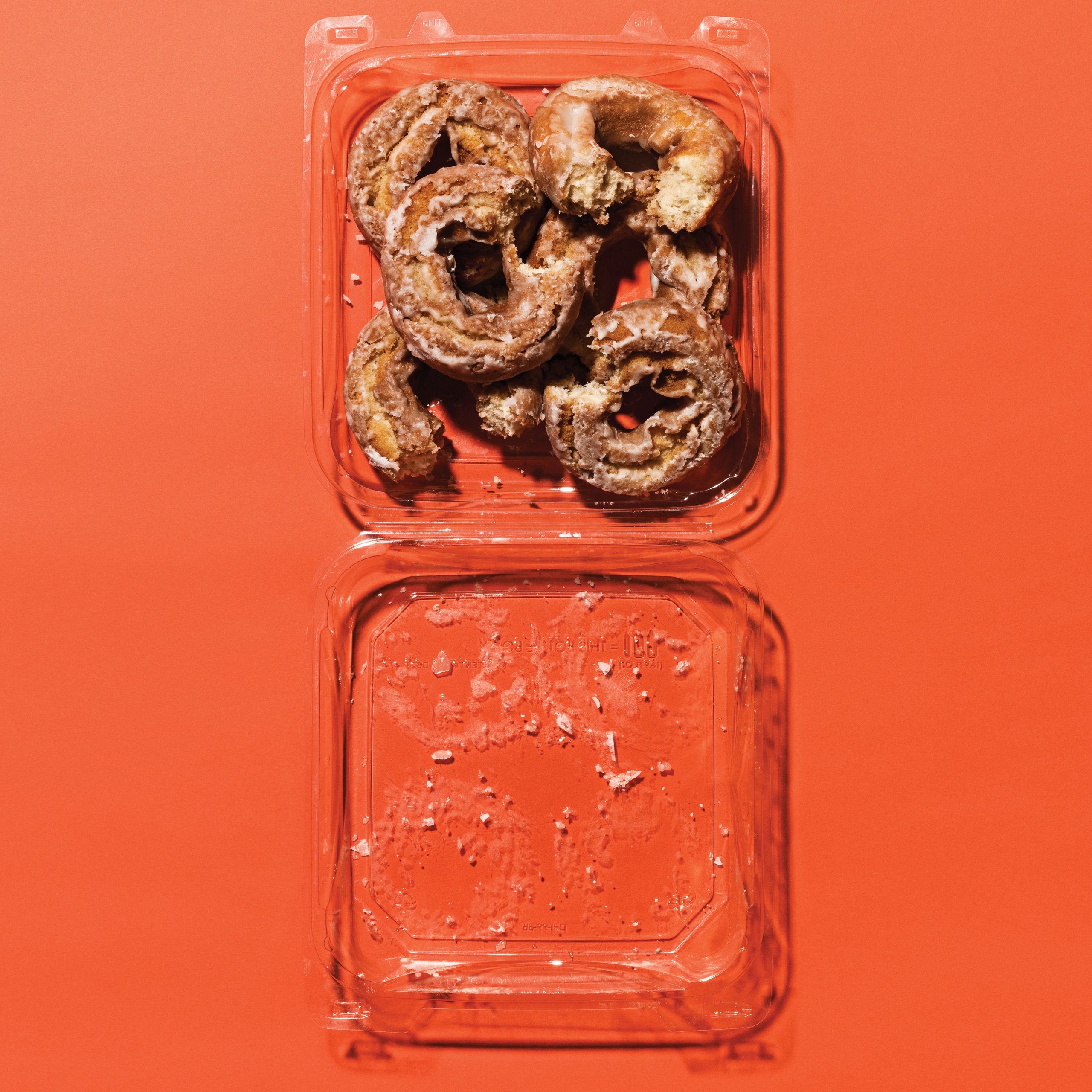As athletes, 28-year-old Renée Tomlin and 25-year-old Kirsten Kasper are remarkably similar. While track and cross-country teammates at Georgetown University, they endured the same brutal workouts. Two and a half years ago, both began competing in Olympic- and sprint-distance triathlons. They moved to San Diego to train together, and last year they were both named to the U.S. triathlon team. Since then they’ve had comparable results—Tomlin scored a World Cup victory in Hungary this season, and Kasper earned a few medals throughout the year. But there’s one big difference between the two: diet.
Kasper fuels with the foods you’d expect a professional athlete to be eating: oatmeal, yogurt, turkey, veggies, and quinoa. “For snacks, I’ll eat rice cakes,” she says. By contrast, Tomlin indulges. Many of the foods on her training table might be found in a college freshman’s mini fridge: hot dogs, doughnuts, beer, and milkshakes. “Chips are an excellent recovery food,” she says.
Conventional wisdom would suggest that Tomlin could improve performance dramatically by simply changing how she eats. But new research is showing that foods affect each of us differently, depending on myriad factors, including our genes. This has led to a number of startups populating the personalized-diet landscape, including , , and . One of the most intriguing is , a company that launched last year in collaboration with immunologist Eran Elinav and computer scientist Eran Segal. The researchers, both with the Weizmann Institute of Science in Israel, are the first to base nutrition on an individual’s gut bacteria.
Between 2013 and 2015, Elinav and Segal monitored 1,000 people over the course of a week and watched how their blood-glucose levels—the amount of sugar taken from food and transported through the bloodstream to supply energy to cells—were affected by what they ate. If a person’s blood-sugar levels are too low or too high, they can’t perform optimally, whether they’re working behind a computer or running a 10K.
Elinav and Segal observed trends that tracked with previous assumptions—more carbohydrates in a meal generally raised a subject’s blood-sugar levels, and more fats decreased them. But they also discovered significant variability from person to person. “Some individuals can eat a bowl of ice cream or a piece of pizza and have very low blood-glucose responses,” says Segal. “We also found that foods like rice, in those same people, can significantly raise blood-glucose levels.” Further, Elinav and Segal were able to identify 137 biomarkers that they say determine how an individual might respond to specific foods, including cholesterol, physical activity, and, crucially, gut bacteria.
“This would let us tailor meals to individual athletes. We’d know which foods keep their energy levels high and which they should avoid.”
As a part of their research, the pair developed an algorithm and claim that it can predict which foods will cause sugar spikes in an individual. DayTwo’s clients send in a small stool sample, which is analyzed to ascertain which bugs they contain. “We found that microbiome analysis is very predictive of which foods will cause glucose responses,” explains Segal. Based on that, the company generates a personalized nutrition app that recommends specific meals to help the client maintain normal blood-glucose levels. (The cost for all of this: $399 for six months.)
Not everyone agrees that the correlation between the critters in your stomach and what you should be eating for maximum performance is quite so cut-and-dried. “I can think of no other instance in which the complexity of the microbiome can predict a relatively basic physiological response such as the rise in blood glucose,” says David Jenkins, a professor of nutritional sciences at the University of Toronto. Jenkins believes that more research is needed, looking at a variety of gastrointestinal values and not just microflora.
Still, if their methods hold up, a nutrition algorithm could have major implications for the way athletes approach sports nutrition, and that includes everyone from weekend warriors to pros.
“This type of information would let us tailor meals to individual athletes,” says Pratik Patel, the director of sports nutrition for the University of Oregon’s athletic department. “We’d know which foods an athlete could eat to keep their energy levels high and which foods they should avoid to prevent a spike and then a crash.”
That could mean learning that, say, sports gels and bars aren’t right for many people. For some, Patel points out, those products might not provide enough of a blood-sugar response. For others, the response might be too intense. “This information could allow people to just eat white rice instead of defaulting to a sports product,” he says. “It could also drive companies to create products with different types of carbohydrates that cater to individual needs.”
It’s too soon to determine the efficacy of DayTwo’s microbiome-based approach; early adopters won’t receive sample kits until January. But some athletes are already tailoring their diets to their blood-sugar response. More than 25 professional sports teams in the U.S. use , a blood test that analyzes up to 40 biomarkers, including blood-glucose levels and vitamin deficiencies, and makes nutritional recommendations based largely on those results.
For now, most performance specialists—including , the Phoenix outfit that works with professional football and soccer players, among others—continue to recommend the classic two-to-one carbs-to-protein ratio to most of their athletes.
That’s not to say that the movement toward diet personalization doesn’t have athletes like Kirsten Kasper excited. “If it shows that the thing for me to eat to perform at my best is ice cream, that’d be great,” she says. “I love ice cream.”


